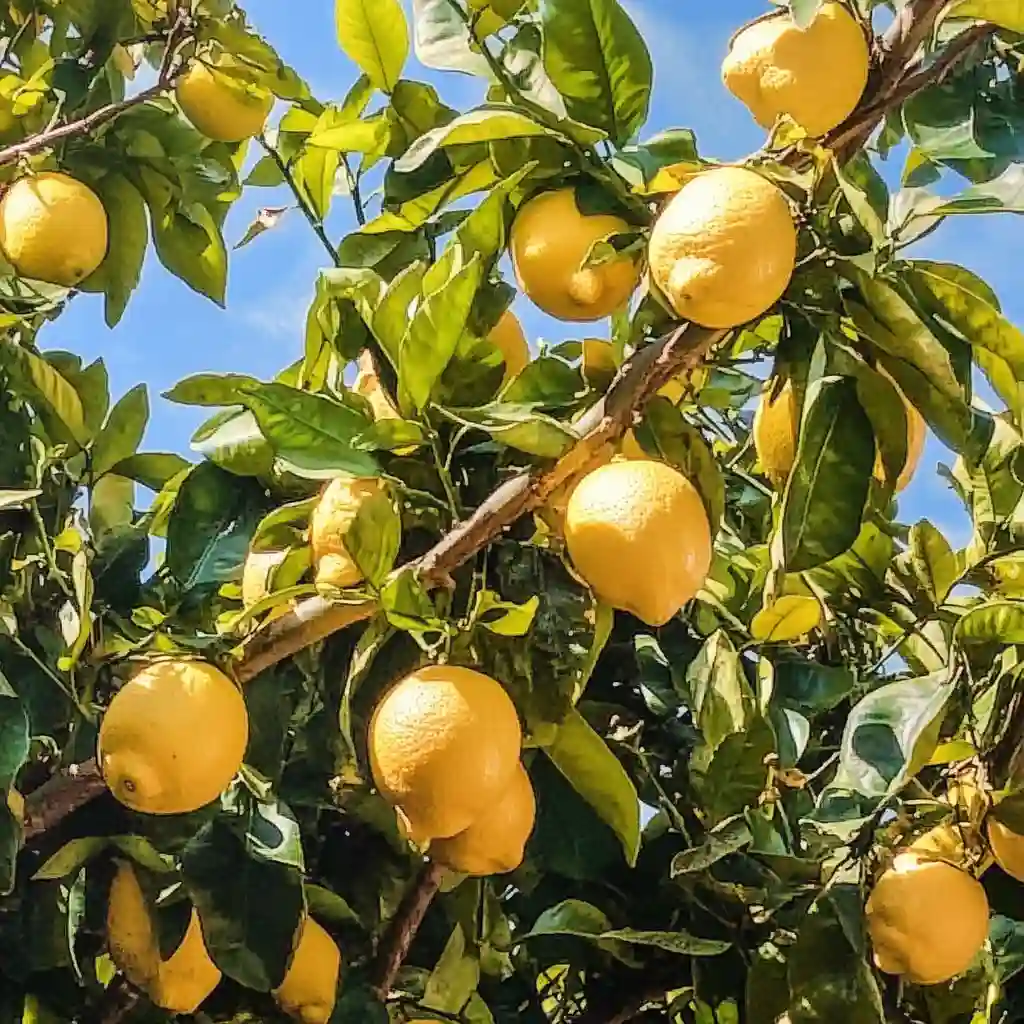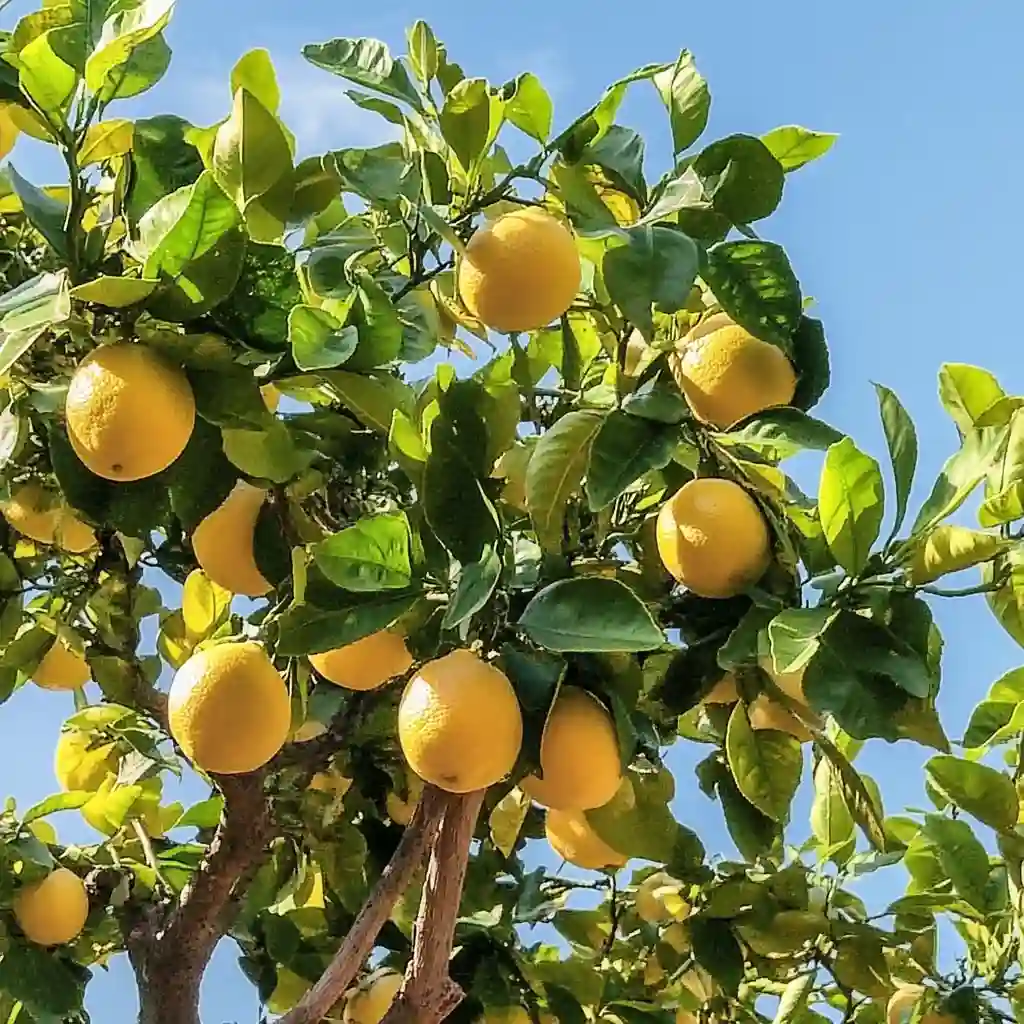If you’ve ever dreamed of plucking a fresh lemon right from your own tree—whether you’re in sunny California or a small apartment in Chicago—this guide is for you. Learning how to grow a lemon tree from seed no matter where you live isn’t just a fun DIY project; it’s a powerful way to bring a little sunshine indoors. Whether you’re craving the aroma of citrus blossoms, the satisfaction of homegrown fruit, or the countless health benefits lemons offer, starting a lemon tree from seed is simpler than you think.
Lemons are packed with more than just vitamin C. They’re loaded with minerals like calcium, potassium, and magnesium, and they’ve been linked to everything from immune support to improved digestion. Growing your own lemon tree from seed also offers a rewarding sense of connection with nature—no matter how urban your environment may be.
In this multi-part guide, we’ll walk you through everything from choosing the right lemon and sprouting your seed to caring for your tree indoors or outdoors. You don’t need a greenhouse or a tropical climate—just the right setup and a little patience.
Quick Facts & Botanical Insights
Before you plant your seed, it helps to understand what kind of plant you’re about to nurture. Lemon trees are part of the Rutaceae family, and while many lemon varieties exist, not all are equally suited to indoor growing from seed. Here’s what you should know at a glance:
🍋 Quick Facts About Lemon Trees
- Botanical Name: Citrus limon
- Plant Type: Evergreen fruit tree
- Growth Habit: Small tree or large shrub, typically 10–20 feet outdoors, but much smaller in pots
- Fruit Production Time: 3–5 years from seed (faster if grafted, but this guide focuses on seed-grown)
- Life Span: 50+ years with proper care
- Hardiness Zones: USDA Zones 9–11 (but can be grown indoors anywhere)
🌱 Best Lemon Variety for Indoor Growing
If you live in a cooler climate or plan to keep your lemon tree inside, the Meyer lemon is your best bet. Here’s why:

- Compact Size: Perfect for containers
- Sweeter Fruit: Cross between lemon and mandarin orange
- Cold Tolerant: More resilient to indoor temperatures
- Heavy Producer: Known for producing fruit earlier than other lemons
Other popular varieties include:
- Eureka: Common grocery-store lemon; grows well in warmer climates.
- Lisbon: Very similar to Eureka but slightly more cold-hardy.
- Ponderosa: Large fruit, but takes longer to mature and not ideal for containers.
🍃 Fun Botanical Insights
- Lemon trees are self-pollinating, which means you don’t need another plant nearby for fruit to form.
- They have glossy green leaves and highly fragrant white flowers—some people grow them just for the aroma alone!
- Even if your seed-grown tree never fruits, it will still be a beautiful and fragrant houseplant with year-round foliage.
Ideal Growing Conditions for Lemon Trees (Indoors or Outdoors)
To grow a lemon tree from seed successfully—whether you’re in a tiny apartment or a sunny backyard—it’s all about creating the right environment. Citrus trees have specific needs, but once you dial them in, they’ll reward you with vibrant growth, fragrant blossoms, and maybe even juicy lemons!
☀️ Light Requirements
- Amount Needed: 10–14 hours of bright light daily
- Best Placement: A south-facing window is ideal for indoor growers
- Supplemental Lighting:
If natural light is limited, use a 40-watt full-spectrum fluorescent or LED grow light. Set it on a timer to ensure consistent exposure.
🔆 Pro Tip: Rotate your plant regularly so all sides receive equal sunlight and to encourage even growth.
🌡️ Temperature & Humidity
- Ideal Temperature Range: 65°F–75°F (18°C–24°C) during the day; not below 55°F (13°C) at night
- Cold Sensitivity: Lemon trees don’t tolerate frost. If growing outdoors in cooler zones, move the plant indoors during fall/winter.
- Humidity Needs: Moderate humidity is essential, especially indoors. Dry indoor air can lead to curled or crispy leaves.
💧 Humidity Boosters:
- Place the container on a pebble tray filled with water
- Mist leaves daily (especially in winter or dry climates)
- Use a small humidifier nearby if needed
🪴 Soil & Drainage
- Best Soil Mix: Light, well-draining potting mix. Look for a blend of:
- Peat or coconut coir
- Perlite or vermiculite
- A touch of organic compost or citrus-specific fertilizer
- Drainage: Absolutely essential. Use containers with ample drainage holes. Soggy soil = root rot.
🌿 DIY Potting Mix Tip:
Mix 1 part potting soil, 1 part perlite, and 1 part compost. Add a handful of hardwood bark chips for improved aeration.
💦 Watering Routine
- When to Water: When the top 1–2 inches of soil are dry
- How to Water: Water deeply until it drains from the bottom. Discard excess water in the saucer.
- Frequency: Typically once or twice a week. More in summer, less in winter.
🍋 Signs to Watch For:
- Yellowing leaves = likely overwatering
- Wilting leaves that perk up after watering = underwatering
Sprouting & Planting Your Lemon Seed
Now that your growing conditions are set, it’s time for the hands-on part—planting your lemon seed. This process is surprisingly simple and incredibly rewarding. Here’s a detailed, step-by-step guide to sprout your lemon seed and get it growing strong from the very start.
🛠 What You’ll Need:
- An organic lemon (Meyer lemons are ideal for indoor growing)
- A small container (8-inch diameter to start, with drainage holes)
- Potting soil (well-draining citrus mix or DIY blend)
- Water & misting bottle
- Plastic wrap or a breathable cover (to trap warmth and humidity)
- Grow light or sunny window location
🌱 Step-by-Step: How to Sprout and Plant Your Lemon Seed

- Moisten Your Soil
- In a bucket or large bowl, moisten the potting mix until it’s damp all the way through—not soaked, just nicely moist.
- Fill your container with the moistened soil, leaving about an inch of space at the top.
- Prepare Your Seed
- Cut your organic lemon in half and select a large, plump, unbroken seed.
- Clean it thoroughly by sucking off any citrus residue or rinsing gently in warm water. Do not let the seed dry out—moisture is essential for germination.
- For better results, plant it while it’s still moist. Some gardeners also remove the outer seed coat, but this is optional.
- Plant the Seed
- Make a small hole about ½ inch deep in the center of the pot.
- Place the seed in the hole, pointed side down (though lemon seeds are forgiving) and cover it gently with soil.
- Water & Cover
- Lightly water the surface again or mist it with a spray bottle.
- Cover the container loosely with breathable plastic wrap, a clear plastic dome, or even a sandwich bag with a few holes poked in it to maintain humidity.
- Label the pot if you’re planting more than one seed.
- Create a Germination Zone
- Place the pot in a warm, sunny location (70°F–80°F).
- A heat mat can help if your home tends to be cool, especially in winter.
⏳ What to Expect:
- Sprouting Time: 1–3 weeks on average
- When You See a Sprout: Remove the plastic cover immediately to prevent mold and allow airflow.
- Sunlight: Move the pot to a bright spot with at least 10 hours of light daily or use a grow light.
- First Leaves: Your seedling will first develop “cotyledons” (seed leaves), followed by its first true lemon-shaped leaves.
Maintenance & Ongoing Care
So your lemon seed has sprouted—amazing! Now comes the nurturing phase, where your tiny citrus baby starts developing into a healthy, vibrant tree. With the right care, it can eventually produce fragrant blooms and delicious lemons, even indoors. Here’s how to give your lemon tree the long-term support it needs.
🌿 Watering Your Young Lemon Tree
- Consistency is Key: Keep the soil evenly moist, especially during the early stages of growth.
- Test Before Watering: Stick your finger into the soil—if the top 1–2 inches are dry, it’s time to water.
- Avoid Overwatering: Yellowing leaves and soggy soil are signs of too much water. Let the soil drain fully after each watering.
- Deep But Infrequent: Once the tree is established, water deeply to encourage strong root development, but let the top layer dry between waterings.
☀️ Sunlight and Positioning
- Minimum Light: 8–10 hours daily of bright light (preferably direct sunlight).
- Rotate Weekly: Turn the pot every few days to ensure even exposure and prevent lopsided growth.
- Use Grow Lights: If natural sunlight is limited, supplement with a 40-watt full-spectrum fluorescent or LED grow light for consistent brightness.
🍽️ Feeding & Fertilizing
- When to Start Feeding: Once your seedling has a few sets of true leaves, it’s ready for nutrients.
- Best Fertilizers: Use a balanced organic fertilizer, citrus-specific fertilizer, or compost tea.
- Application Schedule:
- Feed every 4–6 weeks during active growth (spring and summer).
- Hold off in winter unless your tree continues to actively grow indoors.
🌱 Compost Tip: You can add a layer of homemade compost or worm castings around the base for slow-release nutrients.
🪴 Repotting as Your Tree Grows
- Initial Pot Size: Start with an 8-inch container.
- When to Repot: When roots begin circling the pot or poking out of drainage holes.
- Potting-Up Timeline:
- Move to a 10–12 inch pot after 2–3 years.
- Use containers with good drainage—terra cotta, wood, or plastic all work well.
🍃 Pruning & Shaping
- Early On: No pruning is needed until the tree is several months old and over 6–8 inches tall.
- Why Prune: Pruning promotes a bushier, stronger structure and allows light into the canopy.
- How to Prune:
- Pinch back leggy or overly tall growth.
- Remove any weak or crowded branches as the tree matures.
🌿 Bonus Tip: Gently brushing your hand over the plant every day can help strengthen stems and simulate outdoor breezes—especially important for indoor growers!
Common Pests & Diseases + Organic Solutions
Even the healthiest lemon tree can run into a few hiccups along the way—especially when grown indoors, where air circulation is limited and pests can go unnoticed. The good news? Most issues are easy to fix with eco-friendly care. Here’s what to watch for and how to respond.
🐛 Common Pests (and Natural Fixes)

1. Aphids
- What to Look For: Clusters of tiny green, black, or white bugs on new growth.
- Symptoms: Curling leaves, sticky residue (honeydew), ants.
- Solution:
- Spray with a mix of water + a few drops of dish soap + neem oil.
- Release ladybugs if growing outdoors or in a greenhouse.
- Rinse leaves regularly to prevent build-up.
2. Spider Mites
- What to Look For: Tiny red or yellow dots, fine webbing on undersides of leaves.
- Symptoms: Speckled or bronzed leaves, leaf drop.
- Solution:
- Increase humidity—mites thrive in dry air.
- Spray with neem oil or a garlic/chili spray.
- Wipe leaves with a damp cloth regularly.
3. Scale Insects
- What to Look For: Hard, brown bumps on stems and leaf veins.
- Symptoms: Sticky leaves, slowed growth.
- Solution:
- Scrape off manually with a toothbrush.
- Apply horticultural oil or neem oil to suffocate remaining pests.
4. Fungus Gnats
- What to Look For: Tiny black flies hovering near soil.
- Symptoms: Wilting seedlings, weak roots.
- Solution:
- Let the soil dry out slightly between waterings.
- Add a layer of sand or diatomaceous earth on the soil surface.
- Use yellow sticky traps to catch adults.
🍂 Common Diseases & Deficiencies
Yellowing Leaves (Chlorosis)
- Possible Causes: Overwatering, nutrient deficiency, or lack of light.
- Fix:
- Ensure soil drains well.
- Use a balanced organic fertilizer with iron and magnesium.
- Increase light exposure or rotate plant position.
Leaf Drop
- Possible Causes: Sudden changes in temperature or light, underwatering.
- Fix:
- Keep conditions consistent.
- Mist regularly to boost humidity.
- Avoid placing tree near heating vents or cold drafts.
Powdery Mildew
- What to Look For: White, powdery coating on leaves.
- Fix:
- Improve air circulation.
- Spray with a solution of 1 tablespoon baking soda + 1 quart water + a drop of dish soap.
🌱 Proactive Care Tips
- Wipe down leaves once a month to remove dust and keep pests at bay.
- Keep a regular watering/fertilizing log so you can adjust as needed.
- Quarantine new plants before placing them near your lemon tree.
Expert Tips & FAQs for Growing Lemon Trees Anywhere
You’ve planted your seed, set up the right environment, and learned how to fend off pests—now it’s time to dive into some expert tips and frequently asked questions that’ll help your lemon tree not only survive but thrive, even in less-than-ideal conditions.
🌟 Expert Tips for Thriving Lemon Trees
1. Simulate Nature
Indoor trees miss out on the natural airflow and environmental changes of the outdoors. Mimic nature by:
- Gently shaking the tree or brushing the leaves daily to strengthen stems.
- Occasionally placing the tree outdoors during warm, calm weather for real sunlight and airflow.
2. Seasonal Adjustments
- Winter: Trees go semi-dormant. Reduce watering, stop fertilizing, and supplement light.
- Summer: Water more frequently and fertilize regularly as the tree actively grows.
3. Be Patient with Fruit
Seed-grown lemon trees can take 3–5 years (sometimes more) to produce fruit—and not all will fruit reliably. Even if yours doesn’t bear lemons, it still makes a lush, fragrant houseplant!
4. Pollination Hack
If your tree does flower indoors but doesn’t get fruit, use a small paintbrush or cotton swab to gently transfer pollen between flowers. Mimic the motion of a bee by dabbing the brush into each flower’s center.
5. Upgrade Gradually
When repotting, only size up by a few inches each time. Too large a container can retain too much water and lead to root rot.
❓ FAQs About Growing Lemon Trees from Seed
Q: Can I plant seeds from store-bought lemons?
A: Yes—but make sure they’re organic. Non-organic lemons may have been treated with chemicals that prevent germination.
Q: My seed hasn’t sprouted after 3 weeks. What now?
A: It might still germinate—some take up to a month. Keep the soil warm and moist, and avoid letting the seed dry out.
Q: My seedling is leggy and stretching. What’s wrong?
A: It’s likely not getting enough light. Move it closer to a window or add a grow light to prevent spindly growth.
Q: Will my seed-grown tree be identical to the parent lemon?
A: Not exactly. Lemon trees grown from seed don’t always produce fruit true to the parent—they may vary slightly or even significantly.
Q: How do I know if my lemon tree is happy?
A: Bright green leaves, steady new growth, and a slightly sweet citrusy aroma from the leaves are all signs of a healthy plant.
Conclusion
Growing a lemon tree from seed is more than just a gardening project—it’s an experience that brings a touch of nature into your home, no matter where you live. With patience, light, and a little daily care, that one humble lemon seed can grow into a vibrant tree that brightens your space, perfumes your air, and may one day reward you with fruit you grew yourself.
Whether you’re an apartment dweller in a cold climate or a backyard gardener in a warm zone, the beauty of citrus is that it can thrive just about anywhere if you give it what it needs. And even if your tree doesn’t produce lemons right away—or ever—the process of nurturing it offers its own kind of sweet reward.
So go ahead, grab that organic lemon, prep your potting mix, and start planting. You’ll be amazed at what can grow from one tiny seed.




